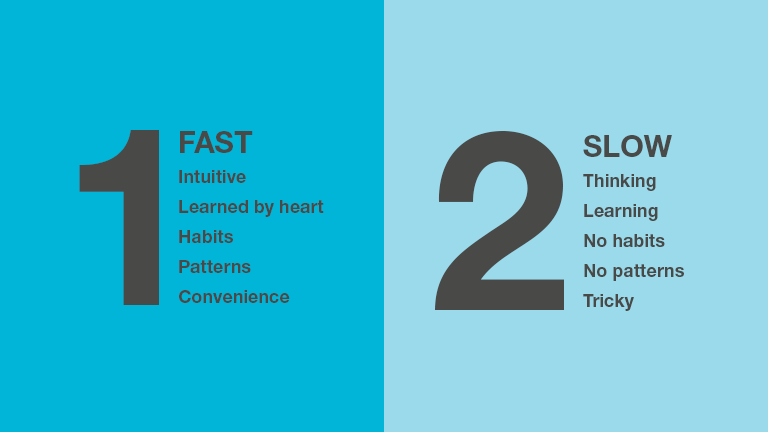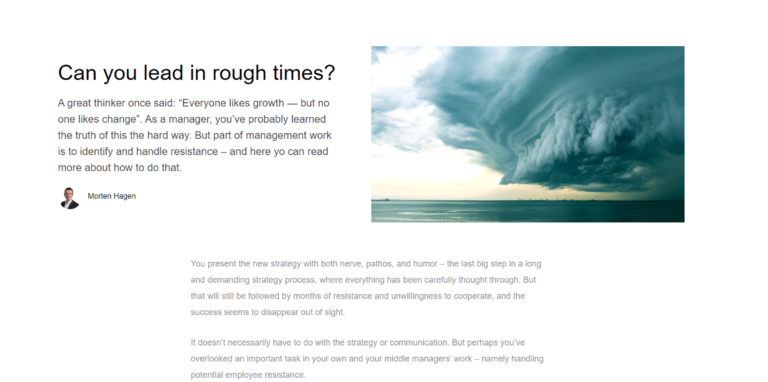Why IT implementation is more painful than it needs to be!
People often say said that it has to hurt before it gets better – and when it comes to new ERP implementation, it often hurts quite a bit. But how much does it really have hurt?
Jes Graugaard

You’re doing the right thing. Business and processes have to be optimized using a new ERP system – or die in a market in rapid development.
The new ERP will give you an edge over the competition – or at least that’s the plan. But will it work? Yes, all else equal being equal – in the long term! But the problem is that all else is NOT equal, because everything else changes. You lose momentum, joy, passion, employee productivity declines dramatically – and your corporate culture will probably suffer as well.
That probably wasn’t part of the plan, but that is nevertheless the reality in almost 100% of major technological change processes. And that goes for yours too!
Why is productivity down?
For two reasons: The brain and change!
In a research project, the brains of people subject to changes were scanned. And the results are a little frightening. During the changes, the brain’s survival center is activated, causing an extreme production of the hormones cortisol and adrenaline. In nature, this would be a good thing. It enhances the body’s ability to fight or flee in situations where our lives are in danger. But our lives are rarely at stake during a new ERP implementation. Consequently, we don’t get to burn off these hormones under this kind of change. Instead, they build up, with catastrophic consequences to follow. Among other things, we experience a greatly reduced productivity – and in some cases long-lasting stress.
However, this doesn’t happen overnight. It takes about three to five weeks before a new – and in this context – negative thought pattern has taken over. But once the vicious circle has been set in motion, it’s hard to stop it. Because the brain loves repeated patterns – positive or negative – as this saves energy. The mind thus prefers taking the lanes with the deepest grooves – and each time they’re followed, the grooves become even deeper.

How much does productivity decline?
The consequences are easy to spot. Everyone is less productive! Not because the new ERP isn’t working – but because the hormones are messing with your brain and reducing your productivity. Expect the change to cost you an average productivity decline of 40%. And expect the cause to be hard to spot. It’s usually the new system that gets the blame – not decreased brain capacity.
Everyone is busy, but activity does not equal productivity – and definitely not efficiency.
Try doing the math per 100 employees. Let’s say that the average annual cost per employee is DKK 500,000. That amounts to at total annual cost of DKK 50,000,000. A productivity loss of 40% will thus equal DKK 20 million – per 100 employees, that is! In other words, it’s equivalent to having 40 fewer employees. Try multiplying this with the number of employees involved in your new technology change. Then add additional costs for employees affected by stress and a higher employee turnover. And note that it will probably take about a year before you can see the full consequences of the productivity decline. But one of the biggest consequences is the loss of a strong culture.
The culture of a company is the collective behavior – everything we do. With a new ERP, the behavior will change in a positive way in the long run – that’s the whole idea – but this requires that the behavior/culture does not suffer too much along the way. Unfortunately, this happens all too often.
What can you do?
… fortunately, quite a lot. It just rarely gets done. We make big investments in training in the use of systems and hardware, but almost always forget to train the ‘software’ inside the minds of those involved.
There is a need for robustness in change…. fortunately, quite a lot. It just rarely gets done. We make big investments in training in the use of systems and hardware, but almost always forget to train the ‘software’ inside the minds of those involved. There is a need for robustness in change.
We need to help the employees to understand what happens in the brain during change – and why it affects their mood and productivity so much. Because with the right tools, each employee can easily learn how to change a negative mindset to a positive. And even to control what effect the brain’s chemistry will trigger – joy or stress.
But this requires our managers to understand the depth of it. Partly to be able to handle their own internal process and change in a positive way – and partly to help employees on the right path when things start boiling over. Or even better – before they start boiling over.
Systems 1 & 2
It’s also about having procedures that clear the brain during the day. During change, there brain’s system 2 is on overdrive – that is, the strenuous and demanding processes such as reflection and learning. These processes require large amounts of energy, and the brain therefore needs a reboot a few times a day to maintain efficiency.

System 1, on the other hand, is behavior that runs on autopilot – habits and routines that don’t require that much energy. This is the brain’s preferred system and the one we use about 90% of the time. We therefore experience it as difficult, uncomfortable, and unfamiliar to change habits and acquire new skills. And that’s why the survival center is activated during change – especially when the changes come from the outside and threaten our autonomy.
Time for leadership?
Finally, the manager’s attention and time is required once the process takes off. However, in almost all implementations, the opposite happens. The managers are burdened with several administrative tasks in the process and are working even harder than before – but not with people. Managers MUST free up time to take care of employees before an implementation. That must ask questions like “What should I do less?” and “What do I need to stop doing to get the time I need?”
Here are some questions you can answer together in order to assess whether you are on the right track:
1 /
Do we and our employees know what happens in the brain during change?
2 /
Are the employees equipped to handle the thoughts that arise during change, so that they can maintain a positive mindset?
3 /
Do we have procedures in place to ensure optimum brain performance throughout the day?
4 /
Are our managers equipped and trained to handle people subjected to change?
5 /
Have our managers changed their priorities to make time for the employees?
6 /
Do we have statistics to show whether joy, passion, and productivity are developing as expected?



